January Jaunts: Top Travel Destinations to plan your Remarkable Winter Escape
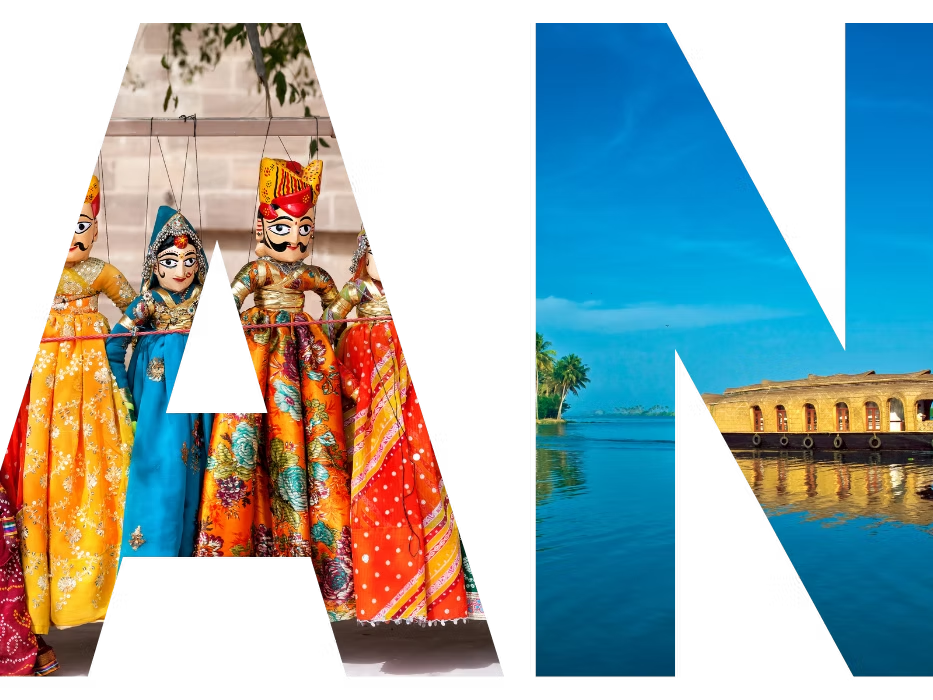
Imagine: As the calendar turns to January, India awakens from its slumber to welcome visitors with a wonderful embrace of experiences that will make your heart skip a beat. It’s almost as if the country is shouting, “Come on, let’s make memories together!” With the winter chill in the air, India’s travel locations in January are a treasure trove waiting to be discovered. India offers it all, from the sun-soaked beaches of Goa, where the party never stops, to the towering forts of Rajasthan, which whisper tales of monarchy, and the calm backwaters of Kerala, which call with their serene beauty. We’re not simply talking about travel in this article; we’re embarking on an adventure, a whirlwind romance with India in January. Whether you’re someone looking for alpine highs, a beach bum looking for sandy coasts, or a culture vulture looking for unparalleled immersion, we have you covered. Read on for a ready-to-embark-on travel itinerary and guide for your 20-day long winter escape 🙂 Here are the top 3 places you can enjoy your January at! GOA A 20-day trip to Goa in January allows plenty of time to enjoy the beaches, culture, cuisine, and natural beauty of this renowned Indian tourist destination. Here’s a thorough travel itinerary to help you make the most of your trip: Days 1-3: Goa Arrival Arrive at Dabolim Airport or Madgaon Railway Station in Goa. Make your way to a beachfront town like Calangute, Baga, or Anjuna. Spend the first several days lounging on the beach, getting to know the locals, and enjoying the lively nightlife. Days 4-6: North Goa Visit North Goa’s beaches, such as Calangute, Baga, Anjuna, and Vagator. Take a look at the historic Aguada Fort and Aguada Lighthouse. Take part in water sports such as paragliding and jet skiing. On Wednesdays, visit the Anjuna Flea Market for shopping and local crafts. Find top North Goa hotels where you can enjoy a luxurious and comfortable stay here! Days 7-9: Central Goa Relocate to a more central area, such as Panaji, Goa’s capital. Visit the St. Augustine Tower and the Basilica of Bom Jesus in Fontainhas’ Latin Quarter. Spend a day in Old Goa, where you may visit the Se Cathedral, the Church of St. Cajetan, and the Archaeological Museum. In the evening, take a river boat on the Mandovi River. You can find more plans to add to your travel itinerary by reading this blog. Days 10-12: Relaxation in South Goa Visit South Goa’s quieter beaches, such as Palolem, Agonda, and Colva. Go to the Cabo de Rama Fort for stunning views of the coastline. Visit the Cotigao Wildlife Sanctuary to see the native flora and fauna. Days 13-15: Nature and Adventure Travel to the Western Ghats to see the Dudhsagar Waterfalls. To get to the falls, you can take a walk, a vehicle safari, or a rail ride. Pay a visit to the Bhagwan Mahavir Wildlife Sanctuary and the Mollem National Park. Discover the Tambdi Surla Temple, a 12th-century wonder tucked away in the jungle. Days 16-18: Beach Relaxation and Water Sports Return to your favourite beach in North Goa or discover new ones. Visit quieter beaches such as Ashwem, Morjim, and Arambol. Go on a dolphin-watching, snorkelling, or scuba diving cruise. Looking for in-depth details about the water sports offered in Goa? Get adventure-ready by reading more about them here! Day 19-20: Shopping and Culinary Delights Sample Goan cuisine at nearby restaurants, including vindaloo, xacuti, and bebinca. Look for souvenirs and handicrafts in the local marketplaces. Take in your final sunset in Goa and reminisce on your unforgettable journey. Also read: Top romantic things that you can do with your partner in Goa! ???? In a nutshell, Goa is a sliver of paradise that begs to be explored. Consider renting a scooter or car for easy transit throughout your vacation, and book your accommodations well in advance, especially if you’re travelling in January, which is peak tourist season. RAJASTHAN A 20-day journey to Rajasthan in January allows you to immerse yourself in the rich history, culture, and different landscapes of this enthralling Indian state. Here’s a detailed itinerary to help you make the most of your Rajasthan adventure: Day 1-3: Jaipur Arrival Arrive at the Sanganer International Airport or the Jaipur Junction Railway Station in Jaipur. Check into your hotel in the Pink City. Explore Amber Fort, City Palace, Hawa Mahal, and Jantar Mantar, among other prominent Jaipur attractions. Bonus! – 7 day trip to Rajasthan: Tips and travel plan Day 4-6: Jaipur and the Surrounding Areas Visit Nahargarh Fort for panoramic views of the city. Explore the markets of Jaipur for authentic Rajasthani crafts and textiles. Take a day excursion to Amer and visit Jaigarh Fort. Visit the Albert Hall Museum and lunch at a typical Rajasthani restaurant. Day 7-9: Pushkar Drive to Pushkar, a holy town famous for its sacred lake and Brahma Temple. Visit the Pushkar Camel Fairground if your trip coincides with the fair (which is normally held in November). Explore the town’s lively streets and markets. Day 10-12: Jodhpur Travel to the “Blue City” of Jodhpur. Mehrangarh Fort, Jaswant Thada, and Umaid Bhawan Palace are all worth seeing. Discover the busy markets surrounding the Clock Tower and Sardar Market. Day 13-15: Udaipur Udaipur, the “City of Lakes,” is a short drive away. City Palace, Jagdish Temple, and Saheliyon Ki Bari are all worth seeing. Take a boat trip on Lake Pichola and see the Lake Palace and Jag Mandir from the water. Day 16-18: Rajasthan in the countryside Stay at a vintage hotel or homestay in rural Rajasthan. Discover the culture, traditions, and food of the area. Visit villages, meet residents, and take part in cultural events. You can even explore an offbeat village in Rajasthan, of which more details can be found by clicking here! Day 19-20: Jaisalmer Travel to the “Golden City” of Jaisalmer. Jaisalmer Fort, Patwon Ki Haveli, and Gadisar Lake are all
Planning a Trip to Manali this Summer? Here’s What You Need to Know About the Weather
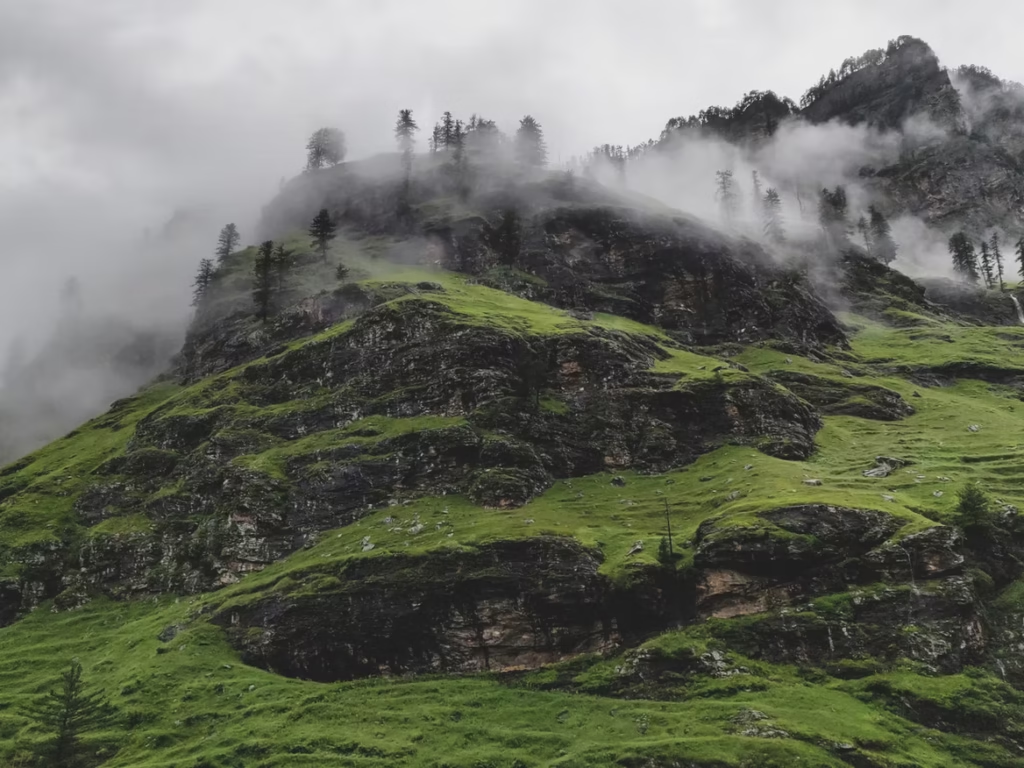
Nestled high up in the magnificent Himalayan mountains of Himachal Pradesh, Manali stands as one of India’s most idyllic and popular summer retreats. As the sweltering summer months approach, you may be dreaming of planning a rejuvenating escape to this picturesque hill station, away from the scorching heat of the plains. However, before packing your bags with gusto, it is essential to understand Manali’s fickle climate and weather patterns during the summer. The weather in Manali can fluctuate wildly and be extremely unpredictable in the summer months between May to August. Sudden downpours, chilling thunderstorms, misty clouds obscuring mountain views – the weather vagaries are manifold. View of a foggy mountain peak (Source: canva) Thus, advance planning and preparation becomes critical to truly enjoy the summer charms of Manali despite the temperamental climes. In this blog, I will provide a detailed overview of Manali’s weather and climatic conditions. You will get insights into the temperature range, humidity levels, frequency of rainfall, sunny intervals, and the impact of altitude on weather during this season. Additionally, I will share how the weather affects key summer activities like sightseeing, trekking, adventure sports, and transportation around Manali. By understanding all these facets, you can pack smartly, plan your summer holiday efficiently and make the most of your time in Manali irrespective of the weather gods’ whims! Manali’s weather: Quick glance Weather in Manali across the year (Source: cottagesinmanali) Summer (April – June) Summers see pleasant daytime temperatures in the range of 15°C to 25°C. However, humidity levels start rising to 65-70% by May end indicating the onset of monsoon. Rainfall also increases from June with occasional heavy downpours. Monsoon (July – September) The monsoon months are humid with average humidity levels spiking to 75-80%. Persistent heavy rainfall occurs with a monthly average of 350mm during peak monsoon season. Temperatures are cooler in the range of 12°C to 20°C.] Winter (December – February) Winters are dry and cold with negligible rainfall. Humidity levels drop further to 40-50%. Temperatures plummet below freezing point after sunset to -5°C with highs of about 10°C during the day. Spring (March – April) The spring months of March and April see temperatures rising to pleasant highs of 18°C to 25°C though nights can still be cool in Manali, with moderate rainfall occurring as light showers during this pre-monsoon transition period. However, sudden weather changes including snowfall at higher altitudes are common as the region moves from winter chill to summer warmth. Best time to visit Manali A camping site full of tourists (Source: canva) Now arrives the most awaited question- What is the best time to visit Manali? However, the answer is that it completely depends on your personal preferences. Here is a list of the pros and cons of visiting Manali in each of the seasons-: Summer (April – June) Pros: Warm, sunny days perfect for sightseeing and photography Can participate in adventure activities like paragliding, camping Scenic mountain views before monsoon fog sets in Fewer tourists and cheaper prices before mid-May Cons: Unexpected heavy showers start by late June with monsoon Rohtang Pass closed due to snow clearance Monsoon (July – September) Pros: Lush green valleys and fores with beautiful views Discounted rates ideal for budget travellers Great for white water rafting with raging rivers Less crowded compared to peak summer Cons: Heavy persistent rainfall leads to landslides Frequent disruption of travel due to landslides and road blockages High chances of road closures especially to Rohtang Pass Limited views due to fog and cloud cover Winter (December – February) Pros: Snow-covered landscapes look picture perfect Activities like skiing, snowboarding, snowmobiling Discounted hotel rates and fewer tourists Hot springs and spas ideal in cold weather Cons: Extremely cold temperatures ranging from -5°C to 10°C Heavy snowfall can block roads and led to being stranded Limited connectivity and accessibility due to road closures Most activities closed down during peak winter Spring (March – April) Pros: Pleasant weather with temperatures rising up to 25°C Lush valleys and flowering fruit orchards Off-season discounts on stays continue Religious festivals like Holi and Easter Cons: Sudden snowfall on higher altitudes still possible Some tourist spots remain closed before peak summer High chances of rain during March Visiting Manali in each season arrives with their own set of pros and cons. Even though some of the pros may overweigh others, visiting the hill station in every season comes out as a completely different experience. What to pack for your Manali trip? A snowy landscape in Manali (Source: Unsplash) Here are some packing recommendations for Manali for each of the four seasons round the year-: Summer (April-June) Summers in Manali have pleasant daytime temperatures, but the high altitude can lead to sun exposure. Cotton clothes that are light and airy suit the generally hot climate. Hats, sunglasses and sunscreen become essential to protect against UV rays at high altitudes. The evenings can get breezy and cooler, so carrying light jackets is advised. For outdoor activities like hiking, sturdy trekking shoes with a good grip are a must. By mid-June, monsoon showers begin, so packing umbrellas becomes vital for protection. Monsoon (July-September) The monsoon months witness heavy downpours in Manali. Rain jackets and umbrellas are a must to stay dry during the persistent showers. With trails becoming slippery, sturdy waterproof boots help maintain stability and prevent falls. Quick dry clothes that can wick moisture are recommended to handle humidity and sudden downpours during outdoor excursions. Leech socks offer protection from leeches prevalent during hikes in the rainy season. Carrying medicines for common ailments like allergies, cold and body aches provides comfort in the damp weather. Winter (December-February) The cold dry winters of Manali call for ample warm clothing. Heavy woolens including sweaters, thermals and jackets help insulate the body from the chilling cold. Snow boots with good traction and gaiters are
Enchanting Shimla: Exploring the Summer Capital of British India
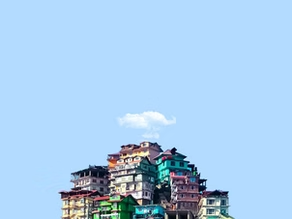
Welcome to Shimla, a charming hill town perched in the shadow of the majestic Himalayas. Known as the summer capital of British India, this alluring location never ceases to enchant tourists with its colonial elegance, breathtaking scenery, and agreeable weather. Let’s set off on a voyage to discover Shimla’s appeal, a location that emanates a nostalgic aura of a bygone period. Shimla is a picturesque hill town in Himachal Pradesh, India, and served as the summer capital of British India. The area is renowned for its mild climate, colonial architecture, and sweeping views, making it the perfect summer getaway location. We’ll examine Shimla and the enthralling experiences it provides in more detail in this blog. British Architecture Shimla is renowned for its exquisite colonial architecture, which is a reflection of its illustrious past and cultural legacy. During the colonial era, the area served as a summer getaway for British officials, and as a result, many of Shimla’s buildings and structures exhibit a distinctive fusion of British and Indian architecture. Explore structures like the Gaiety Theatre, Viceregal Lodge, and Christ Church for an insight into the colonial past of the area. The rich architectural history of the British Raj is on display in Shimla. Admire the fine craftsmanship and design as you stroll down the famous Mall Road, which is lined with attractive colonial structures. Three architectural wonders that transport you to the British era are the Gaiety Theatre, Viceregal Lodge (today called the Indian Institute of Advanced Study), and Christ Church. Credit: Unsplash Summer Retreats Shimla is the ideal location for a summer escape due to its nice climate and beautiful surroundings. Away from the rush of daily life, the area is dotted with a number of summer resorts that provide a tranquil and beautiful setting. Kufri, Chail, and Mashobra are a few of Shimla’s well-liked summer resorts. In these stunning settings, tourists can engage in activities like horseback riding, camping, and trekking. Shimla has been a popular summer destination since the British era, and this trend has not changed. Visit the magnificent Rashtrapati Niwas, sometimes referred to as the Viceregal Lodge, which served as the British Viceroy’s summer home. Explore the architectural wonder that formerly housed the most important political personalities of the era while strolling around the lovely gardens. Credit: Unsplash Himalayan Landscapes Shimla is surrounded by spectacular Himalayan scenery that provides an enthralling vista. Visitors can enjoy a lovely drive through the picturesque valleys or go on a walk over the Himalayan mountains. The Churdhar Trek, the Hatu Peak Trek, and the Shali Tibba Trek are a few of the well-known trekking routes in Shimla. The Himalayas surround Shimla, providing breath-taking views of snow-capped peaks and lush valleys. Ride the Shimla-Kalka Toy Train, a UNESCO World Heritage Site, and take in the beautiful scenery as you go. Visit the Jakhoo Hill, which is the site of the historic Jakhoo Temple and provides sweeping views of the surroundings. Credit: Unsplash The Ridge The Ridge, located in the centre of Shimla, provides sweeping views of the neighbouring snow-capped hills and verdant valleys. Take a leisurely stroll along the Ridge to experience the tranquilly. Admire the magnificent neo-Gothic architecture of Christ Church, one of the oldest churches in North India, and take in the lively atmosphere produced by the neighborhood’s street merchants, musicians, and artists. Credit: Unsplash Shimla Heritage Walk Take a heritage walk to learn more about Shimla’s fascinating past. Discover the town’s historical significance under the British occupation by exploring the colonial-era structures and heritage museums. A wealth of artefacts, images, and papers from the town’s past can be seen at the Shimla Heritage Museum. Shimla is a must-visit hill station in India because of its alluring beauty, charming Britishness, and peaceful atmosphere. Shimla is the ideal getaway whether you want to immerse yourself in history, take in the breathtaking Himalayan vistas, or just relax in nature. Plan your trip to Shimla and discover the allure of this summer capital of British India, where the splendour of the past and the present coexist in perfect harmony. In conclusion, Shimla is a charming location that provides visitors with a distinctive and rejuvenating experience. The area is the ideal location for a special trip because of its British architecture, summer retreats, Himalayan landscapes, local cuisine, and shopping. So grab your belongings and travel to Shimla to discover the charming summer capital of British India. Credit: Unsplash
Spiti Valley best time to visit in 2023
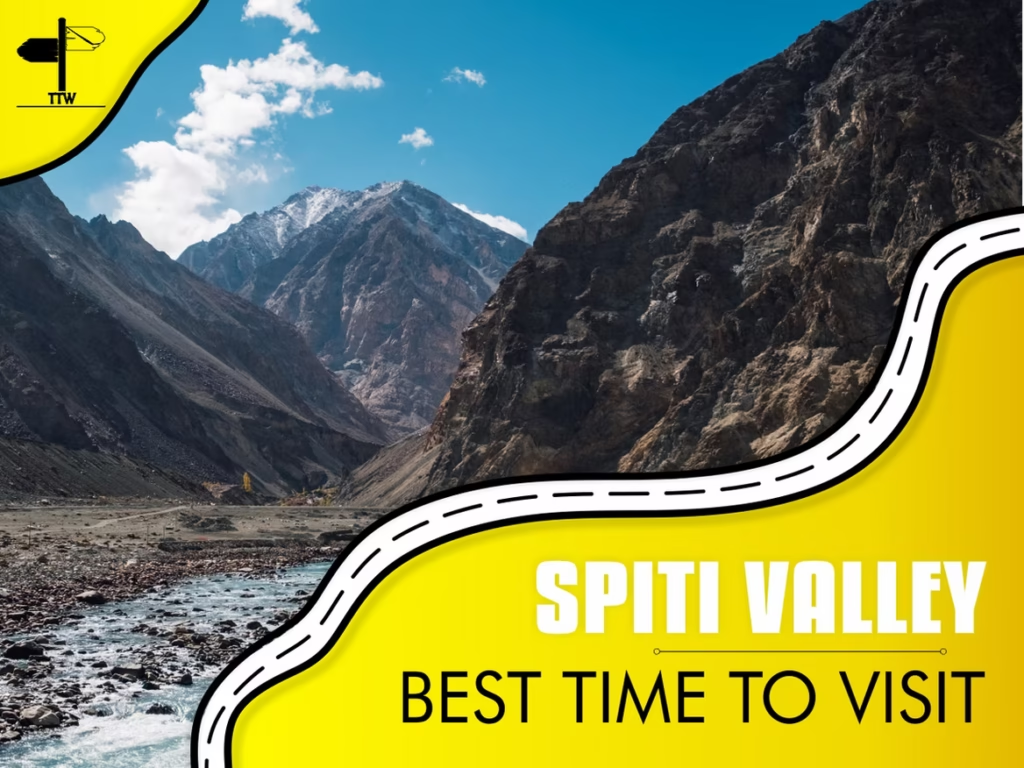
Travel to Spiti Valley at the best time to visit famous Monasteries, Parks, Villages, and Markets & enjoy local dishes with once in a lifetime experience of river rafting in Kullu valley. Spiti Valley is such an exciting place to visit for its natural beauty and cultural heritage. The high mountain passes, still, blue lakes, mother nature, and gushing waterfalls add to the charm of the place when you visit Spiti valley on the right and best time with complete travel or visit guide, information on tour package, things to do, attractions and stays in Spiti Valley. Planning your trip with locals in Spiti Valley. Don’t be concerned, we’ve got you covered. Check out our guide on the best time to visit Spiti Valley to know when there is fantastic weather and a beautiful season to explore the beauty of Lahaul Spiti Valley. Highlight: About Spiti Valley Things to do in Spiti Valley Things to avoid in Spiti Valley How to pack for Spiti Valley Spiti Valley Best Time To Visit in 2023 A brief itinerary for Spiti Valley Best way to explore Spiti Valley Where to stay in Night at Spiti Valley Estimate Travel Cost for Spiti Valley About Spiti Valley Credit: unsplash The Spiti Valley, located in the northeastern part of Himachal Pradesh, a piece of land between Tibet and India, is one of the coldest desert mountain valleys in India. This sparsely populated valley on the Tibetan Plateau showcases the rich culture of Buddhist traditions. Most adventure seekers and trekkers are well-versed in the allure of this destination and have made Spiti Valley a regular stop. This area is home to small villages, monasteries, pristine rivers, green meadows, snow-capped mountains, and friendly locals who live a simple life! Convince your mind and heart to join you on a colorful adventure and go now! Things to do in Spiti Valley Credit: freepik.com Spiti is home to some of the most important Buddhist monasteries in the world. The three most important monasteries are Tabo Monastery, Dongyu Gompa, and Key Gompa. Make a point of visiting at least one of these. One of the best ways to experience life in Spiti Valley is to explore the different villages dotted around the valley. Each village has its own unique character and sights worth seeing. Some of the most popular villages to visit are Kaza, Langza, and Hikkim. Spiti Valley is home to some of the most beautiful lakes in the world. Some of the most popular ones to visit are Chandratal, Suraj Tal, and Pin Tal. While ascending this lovely valley, look out your window at the charming little villages and scenic mountain passes that will make your ride more memorable. When you arrive in Spiti, explore the dozens of monasteries and breathtaking lakes, as well as participate in local activities and festivities that are sure to lift your spirits! Things to avoid in Spit Valley Credit: freepik.com Spiti valley is one of those once-in-a-lifetime spots for many. Incredibly remote, vastly away from man-made environment vastly different from the rest of India, and challenging to reach but try to avoid below: A Spiti valley trip is best enjoyed when you visit it at the best time, Enjoy the surroundings never try to rush and travel hundreds of kilometers in a day. Spiti is unlike anywhere else you’ve ever been the road is always under construction so it’s better to be late than never, Spiti Valley is a high-altitude place throughout the valley and is not something to take lightly. Not trying local food is your biggest mistake as you are missing some world-famous mouth-watering dishes you will love a lot. Spiti valley is known for its sweet weather but that is not the case for nights as this place’s temperature drops rapidly to zero degrees in a matter of time so always avoid packing less warm clothes. Do not drive at night the road throughout Spiti is perilous, to say the least, and you should definitely not drive on them, especially at night. How to pack for Spiti Valley Credit: pexels.com Preparing for Spiti Valley is not just about packing a bag and leaving; it requires solid planning in advance. Situated in the northeastern part of India, covered with snow-capped mountains, one needs to carry the right woolen clothing and accessories for high-altitude treks. During the day, you may need to put on light layers (woolen and cotton clothes) and add thermals or heavy jackets at night. Regular jeans, thick trousers, a pair of socks, caps, scarves, trekking shoes, sunglasses, full-sleeved shirts, sweatshirts, gloves, mufflers, and fleece jackets all depend on the season you choose to visit Spiti. Spiti Valley best time to visit in 2023 Image by jcomp (freepik.com) Summers are the best time to travel to Spiti Valley and enjoy its warm and pleasant temperature of 25 degrees during the day with a nightly drop of 3-4 degrees. Before the arrival of summer, the roads are blocked by heavy snowfall and are, hence, closed. Tourists are advised to consider the months of May–June, and September–November for their visit. Visiting Spiti in May or June is a mistake. Though the weather might be good, you’ll be sharing the remote ancient sites with droves of domestic tourists, as May and June see the highest amount of tourism throughout India. Since Spiti sits in a rain shadow, it’s one of the best places to visit in monsoon meaning July or August are go’s! Heading out on a Spiti Valley trip in September is even better with fewer people, lower prices, and the best part: harvest season! A brief itinerary for Spiti Valley Credit: freepik.com Most common Spiti valley travel visits range between 10 and 20 days. You have plenty of space to visit all the places we have mentioned in “Things to do in Spiti Valley,” but
Welcome Winters in Cochin
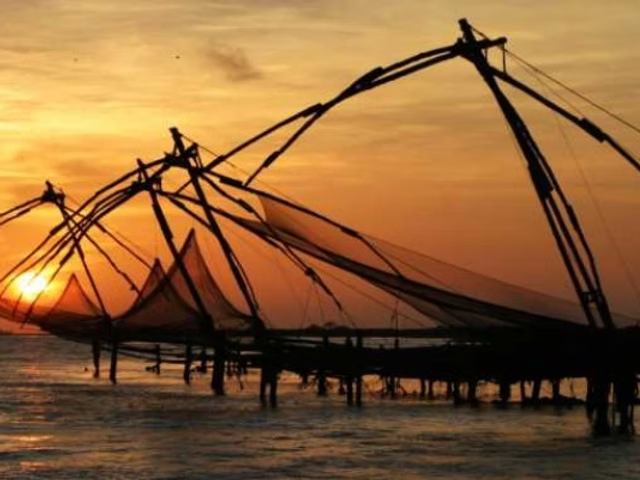
Cochin city on the Malabar coast of India has a good vibe during the winters as the streets light up with twinkling stars, tunes of carols, and shopping to cherish the memories with kith and kin. This city bestows a blend of modern and traditional architecture as few streets of the city depict the eclectic influence of invasion, and few are hued by modern art. The sound of this place defines its cultural influence, province, economic sectors, and explicitly the spirit of unity during the winters as cochin hosts millions of pilgrims on their way to sight Lord Ayyappan along with Christians celebrating Christmas. A pic from getyourguide.com Fort Cochin backwaters: Fort cochin tops the list as this place has backwater beaches, modern cafes, ancient buildings, and the most famous Chinese bamboo fishing nets. Go for an evening walk to watch the seaside illuminated for Christmas eve after sunset and food stalls swarmed before New year’s night. The other side of fort cochin takes you to Dutch, Portuguese, and Pre-colonial architectures. A Pic from the dreamstime website. Santa Cruz Basilica church: This is one of the famous churches in cochin and its construction dates to the Portuguese invasion of cochin and its influence on the locals. The church is packed with people every year when the festival comes around. The walls of the church are covered by historical paintings, Indo-European and Gothic architecture, murals, and frescoes. A Picture from the ndtvfood.com website. Christmas Menu: The “land of spices” has a unique blend of herbs, spices, sweet and sour. The cuisine of Kerala is different from other parts with flavors of the middle east, Syrian and Jewish cooking styles. Some of the festive foods you get at every local Christmas meal are Pidi, appam, chicken stew, and Kerala beef fry with Malabar roti on a banana leaf. A Picture from the Taj hotels website. Open restaurants on Tower Road: Tower road offers the best dining out experience with smoke sizzlers to smacking seafood apart from these savories, the Christmas cakes, and muffins are also a must-try on the eve. A night under the moonlight, do try the street food at these restaurants for a new year’s treat. A Pic from the asianage.com website. Mattancherry Palace: The Dutch palace has murals, paintings, and portraits of Cochin rulers and stories of Jewish invasions. The Jew synagogue is a revered shrine among the locals and the tourists are allowed into the sanctum sanctorum barefoot. This place is even more beautiful during the winters with preachings and prayers. A Picture from Pinterest. Jew town: A rivulet between Synagogue and Mattancherry palace is a Jew town, a place to shop for antiques, metals, and wood crafts made by the Kerala craftsmen. Get all the glitters, baubles, and vintage figurines to make your tree special. A Pic from the infonlive.com website. Essential oils and perfumes: Get your bags loaded with all the handpicked organic stuff like nuts, spices, cold-pressed oils, and floral perfumes. The state promotes sustainability among the locals and tourists by following the methods that conserve nature and its produce. Most of the tourists do pick the beverage bags, banana chips, coconut chocolates, and cutlery. The largest producer of coconut, herbs, spices, and products made of it like oils and perfumes making it safe for all groups. This winter enjoy your Christmas and New Year with co-travelers, localities, and foreign tourists in the oldest ports of India and get the best travel experience planning it with the right people like Tarzan Way.
Roadtrips to Embark on this Monsoon in India
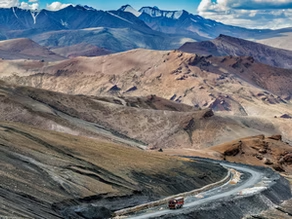
As the famous saying goes, ‘the journey is the destination’, this holds true for one of the most memorable travel experiences when it comes to road trips in India. India is very generous in its offering to anyone willing to travel the lengths of the country. Be it the bustling cities or the quiet hill stations or the lively villages, every part of it serves as an experience to hold on to for life. Road trips in themselves may sound tough and exerting to both the mind and the body. But with the right people at the right time and the right choice of vehicle, road trips in India have so much to offer to anyone willing to take on the challenge. With the onset of monsoon coupled with travel season being on the low and almost on hold, hitting the road for trips can be both budget-friendly and memorable ways to beat the rain literally showering on your fun parade. Keeping that in mind, we’ve picked up some routes that will guarantee you the best monsoon road trips in India. Top Road Trips in Monsoon in India Manali to Leh Chandigarh to Kasauli Srinagar to Zanskar Valley Jaisalmer to Jodhpur Puri to Konark Bangalore to Ooty Chennai to Pondicherry Vishakhapatnam to Araku Valley Manali to Leh Credit: Outlook India A road trip that calls for every adventure enthusiast to take up at least once in their lifetime when in India would undoubtedly be the journey from Manali to Leh road trip. The fascinating beauty of the snow-draped mountains and pristine weather from Manali to Leh is truly unmatched. The 474 km long route is clearly one of the most beautiful highways in India. This route comes alive during the monsoon season with occasional rainfall that glistens up the road and offers a thrilling ride along. With some deadly twists and turns, spectacular landscapes, and stunning monasteries, this road trip is exhilarating and needs to be experienced for yourself. Duration: 2 days Distance: 474 km Recommended route: Manali – Rohtang – Gramphu – Kokhsar – Keylong – Jispa – Darcha – Zingzingbar – Baralacha La – Bharatpur – Sarchu – Gata Loops – Nakee La – Lachulung La – Pang – Tanglang La – Gya – Upshi – Karu – Leh Chandigarh to Kasauli Credit: Jannar-e Himachal A relatively short road trip that will definitely guarantee a good trip in the hilly terrain is the stretch between Chandigarh and Kasauli. A dotted route that is famous for the scenic view of The Himalayan expressway with lush green mountains all around it, this road trip when taken during the monsoon season will open up your senses. The light rain during the trip will enhance the view of the forest cover of the mountain as it relaxes and calms your mind. As you drive along, the colonial-era churches and houses line the roads which almost feels nostalgic and filmy, especially on a rainy evening. The sloppy roads and blind cuts at some point may require careful attention but apart from that, this road trip will be everything you would want it to be. Duration: 2 hours Distance: 57 km Recommended route: NH5 Srinagar to Zanskar Valley Credit: Devil on Wheels The tales of the charm of both Srinagar and Zanskar valley are known far and wide for their enticing views and offerings to visitors. But this offbeat road trip that starts from Srinagar to Zanskar Valley is truly an experience of its own. There is no way an adventurer with a knack for road trips will regret taking this trip as it traverses through snow-capped mountains, breath-taking villages, alpine forests, and streams gushing through the valleys. Although the monsoon season is in full force in almost all parts of India, rainfall in this region is almost non-existent and hence it makes for a great choice to avoid the rain and enjoy a downpour-free ride during this time of the year. Duration: 2 days Distance: 447 km Recommended route: Srinagar – Kargil – Padum Road – Zanskar Valley Jaisalmer to Jodhpur Credit: Ketan Nikharge A wild ride along the lengths of Rajasthan will eventually unravel the beauty of this land with its periodic villages, the stretch of deserts, and golden fields. A popular road trip route in Rajasthan from Jaisalmer to Jodhpur during the monsoon season will heighten the adrenaline as you traverse across various places and challenge yourself with frequent rain. Though most of the roads that stretch along this trip are even and comfortable, you might come across some patchy and unpaved spots. But no trip is complete without a little bump and this should not be a reason to deter you from taking this opportunity to venture out into the quirky trip in Rajasthan. Duration: 3 days Distance: 307 km Recommended route: Jaisalmer – Chandan – Khetolai – Pokhran – Dechu – Shekhala – Agolai – Jodhpur Puri to Konark Credit: Anindita Das Escape the heat of the city and revel in some time enjoying a trip along the impeccable roads of the Puri-Konark highway route. As you drive through the rain with a cool breeze and views of canopy trees lining the sides of the road, this road trip in monsoon is truly a memorable experience. The route is also called the Puri Monark Marine drive as it runs parallel to the Bay of Bengal and offers impeccable views of the beach. Usually, on rainy days the waves of the sea and various stopovers at temples, food stalls, and beaches on the way will give you a small insight into the culture and lifestyle of the people on the eastern coast of India. Duration: 2 hours Distance: 35 km Recommended route: Puri – Konark Marine Drive Bangalore to Ooty Credir: Revv The road trip starting from the IT capital of India to the Queen of the Nilgiris will most likely be one of the most memorable experiences. Lush green valleys,
Best Winter Destinations in India
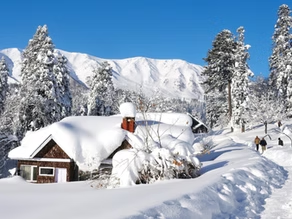
There’s something special about taking a vacation during winter. No two places experience it quite the identical way and a visit in winter often appears like you’re seeing a destination again for the very first time. Unlike other seasons, winter can completely transform an area and make an exciting experience that you just can’t get at other times of the year. With a series of various destinations and cities in one country, India offers a buffet of cultures for the would-be winter traveler. Either way, India encompasses a wealth of destinations to satisfy every taste. Whether that be the snowy slopes of the Gulmarg or the gentle winter sunshine of Udaipur, the list of places to spend winter in India are endless. Not every destination is suited to winter, except for those who are, there’s unlikely to be a more appropriate time to go. Let’s take a look at the best winter destinations in India and what makes each so special. Gulmarg Photo by Make my trip Gulmarg, also known as ‘Meadow of Flowers, is truly one of the most beautiful travel destinations in Kashmir. A crowning jewel of North India, it is a winter wonderland that will live up to anyone’s expectations offering the best of views of snow-draped mountains making it an almost snow globe world in itself. Also housing several winter sports, Gulmarg is among the most favored destination and is indeed a winter adventurer’s paradise. It has something to offer to any traveler willing to visit the town during the winter months. What not to miss: Take a ride on the famous Gulmarg Gondola. Trek to the beautiful Alphater Lake. Visit religious sites like the Baba Reshi Shrine and Rani Temple. Auli Photo by exoticmiles Considered to be the best skiing destination in India, Auli is a famous hill station in Uttarakhand famed for its famous glittering snowy slopes, it is another winter destination that will take your breath away as soon as you land. The landscape is covered with a thick layer of snow, numerous ski resorts dotting the region are bustling with holidaymakers, and adventure junkies are on their way to tame the snow-laden slopes. What not to miss: Board the Auli ropeway- Chair lift and Ski Lift, one of the highest in the world. Trekking to the beautiful trails of Nanda Devi, Mana Parvat, Kamet, Trishul Peak, and other high peaks of the Himalayas. Binsar Photo by Istock A small town in Uttarakhand known for the surreal beauty of the snow-laden Himalayan peaks, Binsar is bestowed with nature’s best gift. Binsar is a perfect place for wildlife photography, bird watching, and jungle trekking. It is heaven for nature lovers. The Binsar Valley offers excellent views of the Himalayan range mainly the famous peaks like Nanda Devi, Chaukhamba, Nanda Kot, Kedarnath, Panchachuli, etc. What not to miss: Explore the Binsar Wildlife Sanctuary. Watching sunrise and sunset at Zero Point. Visit the Kasar Devi temple and the Bineshwar Mahadev temple. Tawang Photo by Travemynation A charming getaway situated in Arunachal Pradesh, Tawang is a soul-seekers paradise as it offers a perfect escape from the hustle and bustle of everyday life. Gorgeous vistas, beautiful mountain yaks, and warm Monpas tribals make up for the best vacation time in Tawang. Heavy snowfall in December and January gives the town an ethereal look as now encompasses the entire place painting the place in a winter wonderland storybook visual. What not to miss: Take a tour around the impressive Tawang Buddhist Monastery. Visit the mighty Nuranang Falls. Ride along the Sela Pass and Bumla Pass. Shillong Photo by Gerald Cubitt Located in the Northeastern part of India, Shillong, famously referred to as the ‘Scotland of the East,’ is a sleepy hill station in Meghalaya that is adorned with pine trees and beautiful landscapes. Shillong also acts as the gateway to Meghalaya, the state famous for heavy rainfall, caves, tallest waterfalls, beautiful landscapes, and amazing people and their culture. What not to miss: Try the famous street foods of Shillong at Police Bazaar. Visit the famous three-step waterfalls at Elephant Falls. Take a walk around the cleanest village in Asia at Mawlynnong. Gangtok Photo by tour my India Situated in the eastern Himalayan range, the state capital of Sikkim, Gangtok combines a modern, resort town style with ancient spiritual beliefs and impressive natural heritage. Gangtok city is the epitome of neatness and is one of the few such places in India. It is a place that is brimming over with natural wonders of which the Kanchenjunga mountain is the most imposing. What not to miss: Visit Nathula Pass which connects Sikkim with China’s Tibet Autonomous Region. Enjoy a picnic along the shores of Tsomgo Lake. Treat yourself to some amazing sunrise and sunset views at Tashi Viewpoint with the Himalayan range at the backdrop. Udaipur Photo by Getty Images Known as ‘Venice of the East’, the city of Udaipur is blessed with sights that will awaken the soul and sight. Located around stunning water lakes and enveloped by the Aravalli Hills in all directions, Udaipur is known for its azure lakes, magnificent palaces, vibrant culture, and delectable food. The slight breeze in the air during the winter months offers tourists a perfect climate for sightseeing and exploring the city. What not to miss: Enjoy the annual Shilpgram Arts and Crafts Fair. Indulge in beautiful sunset boat rides at Lake Pichola or Fateh Sagar Lake. Shop at Hathi Pol Bazaar, Bada Bazaar, or the Chetak circle. Rann of Kutch Photo by Shutterstock One of the largest salt deserts in the world, Rann of Kutch is a remarkable place with its surreal landscapes. It lies between Gujarat in India and the Sindh province in Pakistan. Given the tempestuous climate, most travelers visit the Great Rann in winter for the best chance to see the lunar-like landscapes. This salt desert has a pristine beauty. The crystal white salt desert is beautiful to watch during sunset.
The perfect summer destinations – GOA & GOKARNA
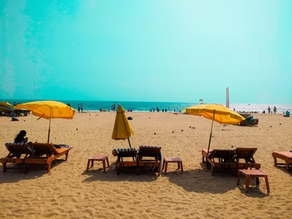
GOA IN SUMMERS There is no doubt that Goa is one of the most popular vacation destinations among the youth. The reason being its popular beaches, exciting nightlife and amazing fun activities to do. Goa is also particularly popular as the perfect summer destination for a fun trip or vacation. This is due to a variety of reasons and here we will discuss the same. So, what are you waiting for? Let’s get going! 1. Weather Summers in Goa typically lasts from early March to late May. The weather is not extremely hot and neither very cool. Usually, April is slightly warmer than May due to the higher temperatures during this time of the month. May is the hottest month of the year here in Goa. The temperature further goes down at night and there is a slightly cool sea breeze blowing. The weather is pleasing and welcoming for all kinds of fun and activities. The sky is a pretty shade of blue with fluffy white clouds partly hovering over the sun. There are little to no chances of rainfall during this time of the year. Summers in Goa – Image by Sarang Pande Read more about Goa and Gokarna 2. Travel cost As people typically prefer to visit Goa in January or February, the summer season has relatively fewer tourists visiting Goa. Due to this reason, all flight tickets to Goa from anywhere in India, are available at very cheap rates – even if not booked in advance. As there is very less crowd and even lesser bookings, all hotels/ cottages offer huge discounts and cheap rates on room bookings. If you plan on doing shopping in Goa or even just buying anything during your trip, it will be a boon for you in this season. This is because the local shops do not have many sales and hence, offer everything at slashed prices and heavy discounts. So, a trip to Goa in summer is light on the pocket and will save you a lot of money. Cheap travel to Goa – Image by Josh Appel 3. Crowd Most of the people visiting Goa prefer the winter months for their vacation. This is because of carnivals and weather during this season. As a result of this, there are very few people visiting Goa in the summer season. Hence, there is little to no crowd in Goa in these months. Because of this reason, you can enjoy everything with peace and at your own pace. There are no crowds, so you don’t need to hurry things up or wait in queues for long hours. This is a boon for people who love solitude or do not prefer heavy crowds. This season is also ideal for people who want to spend an in-door vacation quietly without any hassle. Crowd in Summers – Image by Neeraj Nabar 10 Fun Things to do in Goa 4. Traditional festivals Goa is much more than its beaches or nightlife. It has a rich history of culture and tradition. Another reason for visiting Goa in the summer months is that you get to experience and enjoy some popular and traditional Goan festivals. One of them is the Goa Mango festival that showcases many different varieties of mangoes and several different competitions are also held. Another famous festival is the Goa Cashew and Coconut Festival, held in May. Sao Joao festival is another wonderful festival held in the summer season in Goa. In this, people wear colourful and traditional fancy dresses and dance to the tunes of folk songs. Isn’t all this so exciting? Goa Mango Festival – Image by Mahak Agrawal To conclude, if you are also planning on having a vacation to Goa, the summer season is undoubtedly one of the best times of the year for a perfect vacation. Everything from pleasant weather to amazing festivals and food, you can experience the thrill of it all in Goa in the summers. It is safe to say that Goa is one of the best summer destinations for a family trip, friends trip or even for a couple’s vacation. To plan the perfect itinerary for your next trip to Goa, contact The Tarzan Way for a special customized experience. Workation in Goa GOKARNA IN SUMMERS Gokarna is a not-so-popular smaller version of Goa. It is particularly a small temple town in Karnataka but has all the best elements of Goa – that too on a budget. If you are someone who wants to experience the thrill of Goa but does not want to spend too much on the travel costs, Gokarna is your best option. And just like Goa, Gokarna also is a perfect summer destination for a variety of reasons. Some of these reasons are: 1. Weather Just like Goa, Gokarna has not so hot and not so cold weather during the summer months. It is a little humid during the day but at the same time the pleasant sea breeze that blows at night more than makes up for it. The weather is a moderate one with temperatures between 25 to 35 degrees. The summer season in Gokarna typically lasts from March to May. 2. Travel cost Similar to Goa, Gokarna has the peak season during the winter months from October to February. Because of this reason, during summers everything is available at cheap and discounted rates. Summers are off-season and due to which traveling costs, hotel accommodations and other travel expenses are greatly reduced. 3. Crowd As already mentioned, summers are off-season in Gokarna. There is little to no crowd and you can easily enjoy your trip at your own pace. You don’t need to wait in long queues or go to crowded places, especially in times of an ongoing pandemic. You can stay aloof from people and be safe! 4. Activities There are various activities and fun things to do in Gokarna during the summers. This includes stargazing, concerts and a lot more.
Best Summers in Ladakh!
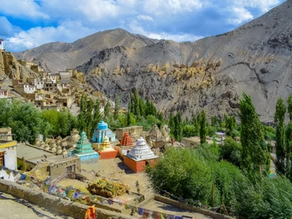
OMG! It gets so hot in Delhi. The scorching bright sun and temperature hitting the maximum annoy me. But what do I even do? What about a Shimla trip? ..Seriously yaar? It is such a crowded area. I want peace! … Do you also feel this? Then this blog is just for you! We all know about the overrated Shimla and Manali trips, but this summer plan the best ever trip, a trip to Ladakh! The snow-covered mountain peaks and lesser crowd are amazing to get relaxed while you enjoy your vacations in Ladakh. Captivating Leh Ladakh, credits: WiX How to reach? 1. By Air It is located at an approximate distance of 615kms via air. The frequency of flights is high and needs only 1.5hour to reach Leh. Viewing snow-covered mountains from high above will surely allure you. This is the shortest and most convenient way to reach Ladakh. 2. By Road The most important reason to visit Ladakh in summer. You can take on a road trip to savor the picturesque landscape. It is famous among youngsters for the adventurous biking journey with the best experiences. It is 1000 km from Delhi if you travel Delhi-Manali-Leh. But if you want to enjoy some time in Srinagar en route, it will be a slightly longer route of around 1230 km. It can help you avoid motion sickness as the altitude rises at a gradual pace, unlike the Leh route. But the journey via road can not be completed in a day and usually needs 2 to 3 days to travel from Delhi. 3. By Road and Air Srinagar-Kargil-Leh route This is the best route to save time and not miss out on adventures. You can enjoy a bike trip to Leh Ladakh. First, reach Srinagar by flight and then drive to Leh. This journey is a heavenly experience. Good internet connectivity and electricity are available throughout the route. It also has ATMs and stay and eat options at various points. You can kick start your journey from Dal Lake in Srinagar itself. Experience the cozy time at the famous boathouse here, the “Paradise on Earth”. Even before you reach Ladakh, you can surely visit these awe-inspiring places. Drive to Sonamarg, the “Meadow of Gold” which is the most visited place in Kashmir. The route is followed by Zoji La pass, famous for its jaw-dropping views. You can visit the Kargil War Memorial and a beautiful rock-carved statue of Lord Buddha in Mulbekh. Do not forget to stop at Fotu La, the highest point on this route, and Lamayuru, the largest gompa in Ladakh. You will travel via gravity-defying Magnetic Hills and Pathar Sahib Gurudwara to finally reach Leh. Attractions: Wondering about why Ladakh? Read below and fall in love with Ladakh, even before you have visited. 1. Moonland Lamayuru is best known for its beautiful landscapes. It is famous for being one of the oldest and largest monasteries. It is believed that Mahasiddhacharya Naropa, the founding Lama, dried up the lake to establish the village. The truth is not known but the carved-out carter-like shapes definitely give Lamayuru the moon-like feeling. That is why it is popular as Moonland. You can pitch your own camps in the village or even after hiking to moon-like carters. You spend some time here while practicing yoga for a refreshing vibe. Also, you get an opportunity to learn with the foremost disciple of Rinpoche. Lamayuru aka Moonland, a shot by Rutpratheep Nilpechr, credits: Unsplash 2. Fun Festivals Traveling experience is best when you can interact with the local people and learn about their culture. The amicable people of Ladakh are always there to bombard your brain with interesting folklore. You get to witness the pompous celebration of festivals with a blend of local culture. The endless festivals make Ladakh more lively. The monastery festival Yuru Kabygyat in Lamayuru; Saka Dawa festival, the biggest festival in Ladakh; Hemis Tsechu are some of the most popular fests in Ladakh. This is the most unique experience in Ladakh. You get to meet local people, know about their daily lives and struggles and enjoy as a part of society. You can see their regional dresses and doll up like one if you wish to 😉 3. Pangong Lake Pangong Lake is the highest saline water lake in the world. It is said to be changing colors throughout the day. This amazing phenomenon allures the visitors. In India, only one-third of the lake is situated and the rest two-thirds is in China. This lake is beautifully located between the mountains and gives an awe-striking view. The reflection of the Himalayas in this highest saline lake makes every moment Gram worthy! The beautiful Pangong Lake captured by Ken S, credits: Unsplash 4. Adventure Do you ever think of why Ladakh is so popular among the youngsters? Is it only the picturesque landscape or the less crowd that attracts visitors from around the globe? Let us help you quench your search. Bike Trip! Ladakh is not only a famous tourist destination but a perfect place for a daring biking journey. The turns and trails of the curvy mountains here make you halt and click jaw-dropping pictures that you miss otherwise if traveling via train or flight. If you are a youngster, an enthusiast, or want to re-live your youth cheerfulness, this biking trip is best for you! Make sure you stop by roadside stalls and try out Thupka. Go adventurous on a biking journey, clicked by Avinash Patel, credits: Pexels 5. Peddle your way through the Valleys If you want a refreshing experience, then go cycling. Khardung La Pass is popular for its rock-carved mountains. It is the highest motorable pass in the world. Cycling at such a height will definitely give you an adrenaline rush. It begins from Leh and covers around 40 km. The last 14 km surely needs some serious effort
The Best Time to Visit Goa and Gokarna
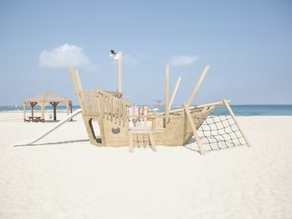
When we plan any vacation, the most important factor to be considered is when to visit that place. Different locations are best enjoyed at different times of the year depending on the season, seasonal activities and food, and also on the people you are going on vacation with. GOA Goa is a beautiful vacation spot particularly popular for its beaches and nightlife. However, seasonal variations offer different kinds of experiences to travelers. Let us see what are these differences based on the seasonal variations and subsequently what is the best time to visit Goa in 2022. Weather in Goa 1. Winters (November to March) Goa in winters has pleasant cold weather along with warm sunlight. You will only need light early winter clothes for this time of the year. This season typically lasts from November to March every year. It is the best time to visit Goa in December. As Goa is a comparatively hot and humid place, these months are the best because it is neither too cold nor too hot. You can enjoy almost all the activities and the nightlife as well. This is also the peak season when the majority of tourists visit Goa and hence is the best season to visit Goa as well. The famous Goa carnival is also organized in the month of February only. This is also the best time to visit Goa for water sports. Winters in Goa – Image by Wix Check out the Goa trip experience shared by Ali More about Goa and Gokarna 2. Monsoon (June to August) This season usually lasts from June to August and is the best time to visit Goa in August. It has a moderate slightly cooler temperature and is packed with rain and thunderstorms. This season brings out all the natural beauty and greenery of Goa although it may be dangerous to experience water sports. It is very damp and wet during this season and hence beaches may not be fully available for tourists. Two amazing festivals called the Patolleanchem Feast and the Bonderam are also celebrated during this time. These traditional festivals are full of fun, laughter, and life. Monsoon in Goa – Image by Wix 3. Summers (March to May) This season usually lasts from March to May and it is very hot and humid during this time. The salty water offers a welcome break from the scorching heat. Also, Goa is particularly less crowded during this time of the year and so everything is available at cheap rates. During this season, the popular Shigmo Festival is also organized along with the Sao Joao Festival. This offers an insight into the traditional rich history and culture of Goa. All in all, this season is the cheapest time to visit Goa. It is very quiet and empty. So, you can take your time enjoying everything to its fullest. This is also the season to get that Goa tan but do not forget to carry sunscreen and a hat too. Summers in Goa – Image by Wix To sum it all up, the best season to visit Goa is undoubtedly the winters. It was also the best time to visit Goa in 2021. This is because it is neither too hot nor too cold and hence, is the perfect pleasant weather for a vacation. Also, all types of water sports and other activities could be enjoyed to their fullest. And the famous carnival during this season is like a cherry on the top. You can wear both light winter and summer clothes without having to worry about tan. But this is also the most crowded and busiest season of the year. 10 Things to do in Goa There is no worst time to visit Goa as all seasons offer a different variety of activities and experiences. If we now try to find the best season to visit Goa in 2022 based on the type of company you are taking with you, here is what we have to say: 1. Friends The time from November to February is actually the best to visit Goa with friends as the weather is very pleasant. You can spend leisure time at the beach relaxing and enjoying the water sports as well. Goa is full of life at this point with amazing fests and carnivals, hence you can enjoy Goa’s tipsy nightlife with your friend’s gang. Vacation with friends – Image by Wix 2. Family The time from March to May is very suitable to visit Goa with your family. This season is the most uncrowded and cheapest time of the year. You can casually enjoy the beaches and everything with your family peacefully. Vacation with family – Image by Wix 3. Romantic partner The best time to visit Goa for couples is the monsoon season from June to August. It is full of greenery and the natural beauty of Goa. You can enjoy most of the time in the resort doing fun activities or nothing at all. Then you can visit the beaches in the evening or afternoon without having to worry about the sun. Couple Vacation – Image by Wix GOKARNA Gokarna is a mini version toned-down version of Goa. It is a small temple town in the state of Karnataka but is also very popular for its beaches. It is famous for the Murudeshwar temple located here and people commonly search about the best time to visit Murudeshwar. Let us try to analyze the best time to visit Gokarna depending on the seasonal variations. Workation in Goa 1. Summers (March to May) Summers in Gokarna are full of scorching heat and humidity. It is very hot and scalding weather. Summers usually last from March to May here. Still, it is not the worst time to visit Gokarna. Gokarna offers a variety of activities to enjoy in every weather. In this season, everything is quite cheap as it is the off-season. Summers – Image

